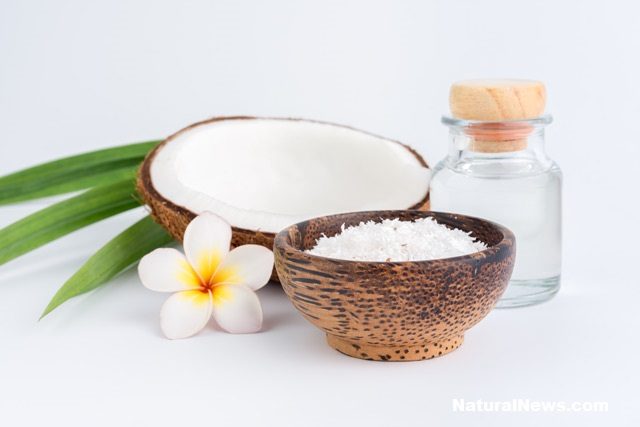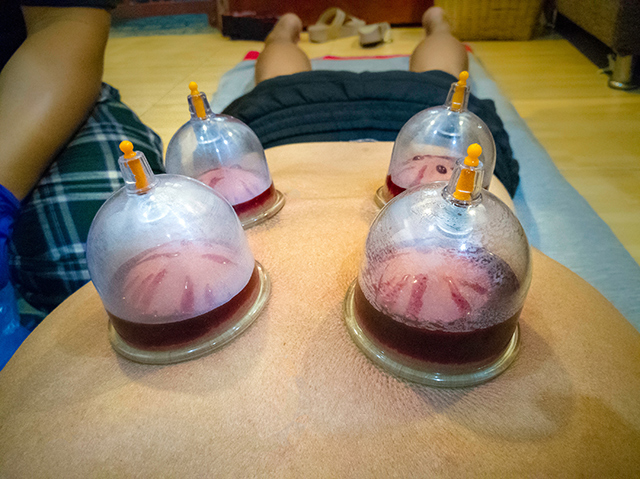Coconut vs. sesame oil: Which one is better for oil pulling?
10/05/2018 / By Edsel Cook

Some people who practice oil pulling swear by coconut oil. Others much rather prefer to use sesame oil. An Indian study compared the two edible oils to determine which one is more effective at reducing gingivitis.
Oil pulling is the Ayurvedic equivalent of gargling with mouthwash. Swishing a small amount of natural oil in the mouth for long periods of time is believed to pull gingivitis-causing microbes and toxins from the mouth and into the oil. The microbes are killed by the bioactive compounds in the oil while the mouth is detoxified.
Various plants are used in this ancient oral hygiene practice. Avocado, black cumin, cedar nut, and olive oil are some of the most popular ones. However, they are also quite expensive, especially in developing nations.
In India, coconut oil and sesame oil are edible oils that are very cheap, widely available, and easily acquired. They also have a significant amount of health benefits attributed to them, such as coconut oil displaying strong anti-inflammatory and antimicrobial activities due to its high lauric oil content.
A team of researchers from multiple Indian universities decided to assess the effectiveness of these substances in oil pulling. They published their findings in the Journal of Natural Science, Biology, and Medicine. (Related: The science behind oil pulling explains how it improves oral health.)
The efficacy of common edible oils on gingivitis through oil pulling
The participants for the test comprised 60 individuals. Each participant suffered from mild to moderate cases of gingivitis due to the build-up of plaque in their mouths.
They were divided into three groups. The first group practiced oil pulling using a comfortable amount of coconut oil while the second used similar amounts of sesame oil. The third group was the control and did not use either oil.
In addition, all three groups also practiced routine tooth-brushing. For the third group, this was their only means of oral hygiene.
Any participant who could not complete the entire trial period was allowed to withdraw from the study. The researchers included new participants to replace them.
The trial lasted for 21 days. The researchers performed follow-ups every week, in which they examined the oral cavities of the participants and encouraged the latter to continue Ayurvedic oil pulling. They evaluated the gingival index score for each participant and each group before the study started, as well as the seventh, 14th, and 21st days of the experiment.
Coconut oil is the better option for Ayurvedic oil pulling
The researchers reported considerable improvements in the oral health of participants in the oil pulling groups. The members of those groups experienced greatly reduced severity of gingivitis, as seen during the weekly assessments.
Of the two oil pulling groups, the coconut oil users experienced higher levels of reduction than the sesame oil users. The toothbrush-only group, on the other hand, registered a mild improvement in the gingival status.
Gingivitis is the chronic inflammation of gingival tissues. It is caused by unhealthy conditions in the oral cavity, which is why adjuvant oral hygiene measures are advised.
Coconut oil contains lauric acid, which is believed to fight inflammation and kill microbes. Lauric acid is also theorized to react with the alkali in saliva. The resulting saponification creates a natural soap that loosens up the plaque clinging to the gingival tissues, thereby further cleaning up the mouth.
Based on their findings, the researchers believe that oil pulling with coconut oil is an effective means of reducing the severity of gingivitis, especially when taken along typical oral hygiene practices such as regular brushing of teeth.
If you are interested in further uses of coconut oil in Ayurvedic medicine, visit HealingArts.news.
Sources include:
Tagged Under: alternative medicine, Ayurveda, Ayurvedic medicine, coconut oil, gingivitis, lauric acid, natural cures, natural medicine, natural remedies, oil pulling, oral care, oral health, oral hygiene, remedies, Sesame oil



















